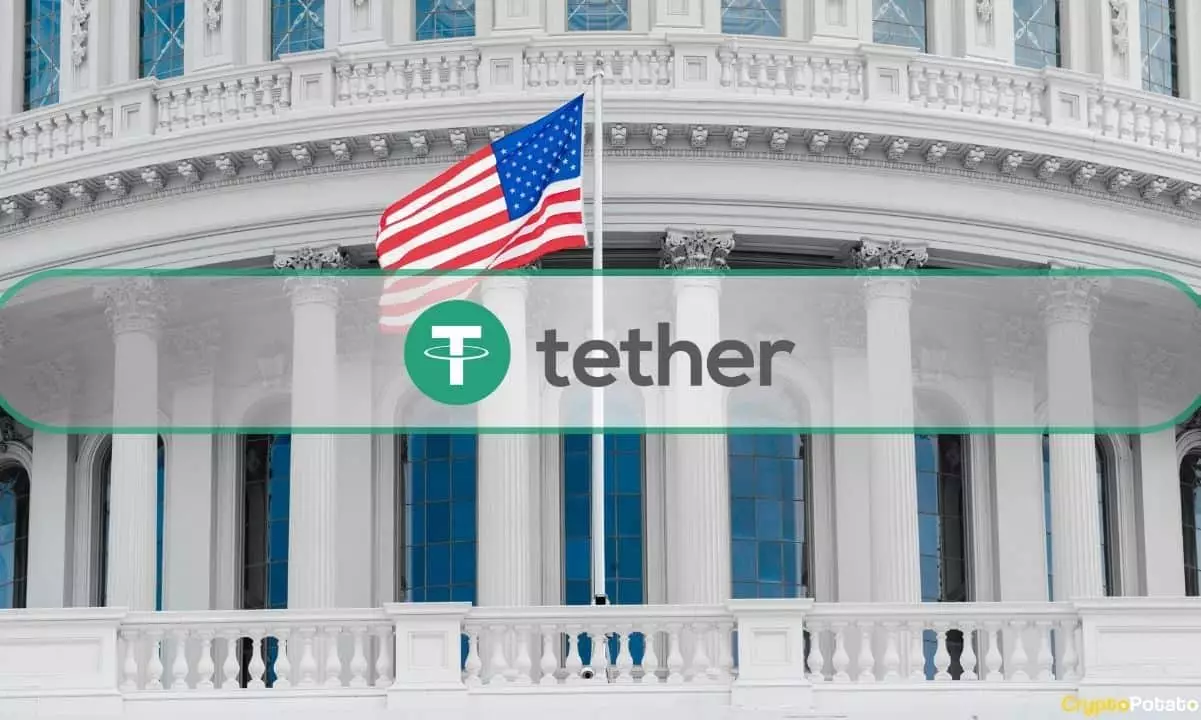In recent discussions among experts in the crypto industry, one recurring topic that has surfaced is the potential of Tether becoming the de facto central bank digital currency (CBDC) of the world. This speculation follows comments made by Cantor Fitzgerald CEO Howard Lutnick, who expressed his support for Tether, stating that he holds their treasuries and is a big fan of the stablecoin. Cantor Fitzgerald, as a global investment bank, brokerage, and financial services firm, holds considerable influence in the financial world.
Glassnode on-chain analyst “Checkɱate” further reinforced the notion, declaring Tether as the CBDC. Drawing attention to the US government’s ability to shut down Russia’s reserves, Checkɱate questioned the possibility of Tether facing a similar fate. With its enormous treasury reserves amounting to over $90 billion, Tether’s stability and potential usefulness as a digital alternative to collapsing fiat currencies cannot be understated.
Bitcoin ESG evangelist David Batten shed light on some crucial disparities between Tether and a CBDC. He pointed out that Tether invests significant amounts into green BTC mining, supports Bitcoin education programs at universities, and even partners with a Bitcoin city like Lugano. These proactive initiatives distinguish Tether from a CBDC. However, it is essential to recognize that Tether remains entirely dependent on US regulators. If the US government were to change its stance, Tether’s existence could be at risk.
US opposition to a Federal Reserve-controlled CBDC has prompted Tether to distance itself from Uncle Sam due to the ongoing war on crypto. Nevertheless, Tether has managed to establish itself as the stablecoin of choice for the rest of the world. General Partner at Dragonfly, Rob Hadick, observed a significant divergence in trading volumes and supplies between Tether (USDT) and Circle (USDC). Traders outside of regulated US/UK firms and retail participants in emerging markets have begun utilizing USDT as a means of transaction.
The success of Tether is evident by its skyrocketing market cap, reaching a record $90 billion. In contrast, Circle’s stablecoin, USDC, has experienced a decline to around $24 billion. This has led Tether to capture a staggering 70% market share of the stablecoin market, relegating Circle’s share to a mere 18%.
While Tether’s rise as a stablecoin and potential CBDC alternative is impressive, questions surrounding its long-term viability and regulation persist. If Tether’s fortunes were to become intertwined with unfavorable US regulatory decisions, it could face significant challenges or potential exclusion from the market entirely. Additionally, the scalability and sustainability of Tether’s operations, particularly in a rapidly evolving digital currency landscape, warrant careful examination.
As the world continues to grapple with the evolving landscape of digital currencies, Tether’s emergence as a global stablecoin and potential CBDC alternative cannot be ignored. Its vast supply of treasuries, market dominance, and appeal to emerging markets demonstrate the demand for a reliable and secure digital currency. However, the need for regulatory clarity, technological innovation, and industry-wide collaboration are paramount to ensure the stable growth and integration of digital currencies into our financial systems.
Tether’s ascent in the crypto industry sparks both optimism and skepticism. While its success as a stablecoin and potential CBDC alternative warrants attention, cautious examination and critical analysis of its operations, regulatory environment, and long-term sustainability are necessary. Only time will tell if Tether can pave the way for a new era of digital currency.

